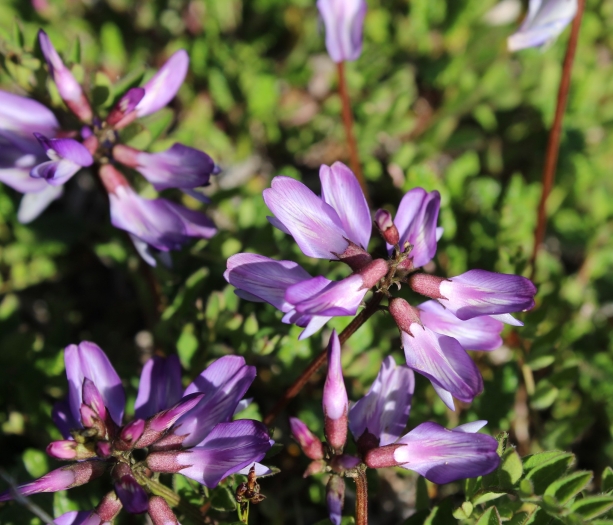Alpine Milkvetch
(Astragalus alpinus)
Alpine Milkvetch (Astragalus alpinus)
/
/

nina_nesterova
CC BY 4.0
Image By:
nina_nesterova
Recorded By:
Copyright:
CC BY 4.0
Copyright Notice:
Photo by: nina_nesterova | License Type: CC BY 4.0 | License URL: http://creativecommons.org/licenses/by/4.0/ | Rights Holder: nina_nesterova | Publisher: iNaturalist | Date Created: 2021-07-15T09:12:21-07:00 |






















Estimated Native Range
Summary
Astragalus alpinus, commonly known as alpine milkvetch, is a perennial herb native to alpine and subalpine zones across the Northern Hemisphere, including regions such as Alaska, Newfoundland, parts of the western United States like Nevada and New Mexico, and across Eurasia. It thrives in a variety of moist habitats, including meadows, tundra, and areas with loose, rocky substrates like gravel bars and scree slopes. Alpine milkvetch typically forms low-growing mats with stems that can reach up to 12 inches in length and pinnate leaves up to 6 inches long. The plant produces small, pea-like flowers that are usually purple or blue, blooming from late spring to early summer and providing a modest display in the landscape.
Alpine milkvetch is valued for its nitrogen-fixing ability, which enriches the soil, and its resilience in harsh alpine environments. It is not commonly cultivated but can be used in wildflower gardens, rock gardens, and restoration projects where its ecological benefits support local wildlife. In cultivation, it requires well-drained soils, consistent moisture, and full sun to partial shade. While not prone to many diseases, it can suffer from root rot if overwatered or planted in poorly drained soils.CC BY-SA 4.0
Alpine milkvetch is valued for its nitrogen-fixing ability, which enriches the soil, and its resilience in harsh alpine environments. It is not commonly cultivated but can be used in wildflower gardens, rock gardens, and restoration projects where its ecological benefits support local wildlife. In cultivation, it requires well-drained soils, consistent moisture, and full sun to partial shade. While not prone to many diseases, it can suffer from root rot if overwatered or planted in poorly drained soils.CC BY-SA 4.0
Plant Description
- Plant Type: Herb
- Height: 0.5-1.5 feet
- Width: 0.5-1 feet
- Growth Rate: Slow
- Flower Color: Blue, Pink, Purple, White
- Flowering Season: Spring, Summer
- Leaf Retention: Deciduous
Growth Requirements
- Sun: Full Sun
- Water: Medium
- Drainage: Medium
Common Uses
Butterfly Garden, Low Maintenance
Natural Habitat
Alpine and subalpine zones across the Northern Hemisphere, including meadows, tundra, and rocky substrates like gravel bars and scree slopes
Other Names
Common Names: Alpine Astragalus
Scientific Names: , Astragalus alpinus, Astragalina alpina, Astragaloides alpina, Astragalus alpestris, Astragalus alpinus f. alpinus, Astragalus astragalinus, Astragalus lapponicus, Astragalus phacinus, Atelophragma alpinum
GBIF Accepted Name: